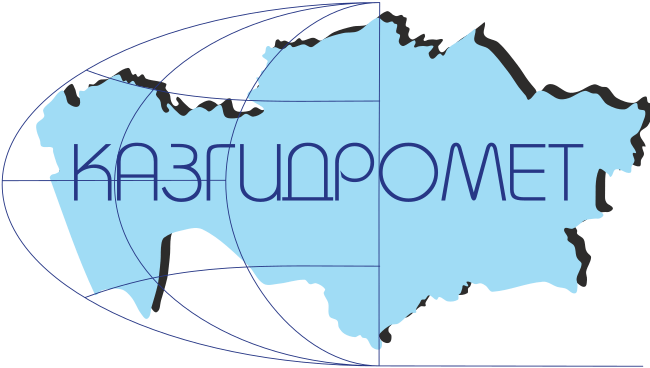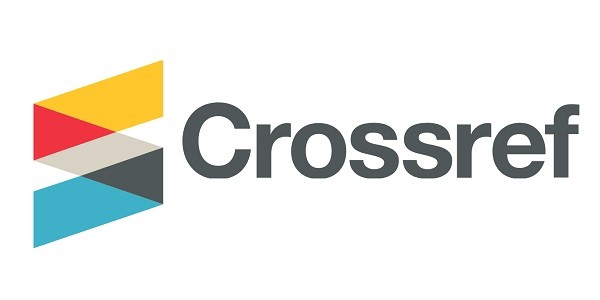ASSESSMENT OF THE IMPACT OF MINING ENTERPRISES IN THE AKTOBE REGION ON THE ENVIRONMENT (USING THE EXAMPLE OF CHROMIUM DEPOSITS)
DOI:
https://doi.org/10.54668/2789-6323-2025-116-1-45-58Keywords:
mining industry , technogenic impact , remote sensing of the Earth (ERS), interpretation methods , quarries, KhromtauAbstract
Remote sensing (ERS) is a powerful tool for exploring quarries and assessing their environmental impact. This method provides extensive capabilities for monitoring, mapping and analyzing changes caused by mining activities. The mining industry has a significant negative impact on the environment, especially quarrying, which leads to landscape changes, contamination of water sources and deterioration of soils. In the Aktobe region of Western Kazakhstan, the mining of chromite ores around the city of Khromtau causes serious environmental problems. The study is aimed at improving the methodology for assessing the technogenic impact of a deposit near the city of Khromtau using Earth remote sensing (ERS) data. The study was based on field research conducted in 2012…2020 and data from мен Landsat-5ТМ (1986 y) and Landsat-8 OLI (2023 y) satellite images. Analysis of satellite images made it possible to identify and map zones of technogenic impact, assess environmental risks and determine the scale of anthropogenic disturbances. For more than 30 years, the area of quarries and disturbed areas has increased significantly, which negatively affects the ecological state of the city of Khromtau and its environs. Heavy metals such as chromium tend to bioaccumulate, which is hazardous to human health and the environment. The use of remote sensing allows you to quickly obtain up-to-date information for monitoring and managing the environmental condition, which helps improve the quality of life and preserve natural resources. The use of remote sensing in the study of quarries of chromite deposits allows not only to identify the scale and nature of technogenic impact, but also to propose measures to mitigate negative consequences for the environment.
References
Dprom.online. The territory of subsurface use. 2021. Waste heaps. Dangerous “traces” of quarries and mines. Received from https://dprom.online/mtindustry/terrikony-opasnye-sledy-karerov-i-shaht/
Bazarova S. B. (2007). The impact of mining enterprises on the ecosystem of the region and the assessment of the effectiveness of their environmental activities. Regional Economics and Management: Electronic Scientific Journal, Vol. 10, pp. 60-70.
Kazachenko G. V., Prushak V. Ya., Basalai G. A. (2018). Mining machines. At 2h. h. 2. Machines and complexes for mining. Minsk: Higher school, 2018, 228 p.
Nedradv business portal. The mineral resource complex of the world. Chrome ores. [Electronic resources] URL: https://nedradv.ru/nedradv/ru/msr?obj=ca79a46078f5785d6a24f2c3830ce1ec, data of access: 10.07.2024
Project Engineering group. The global and Kazakhstani chromium market. [Electronic resources] URL: https://pe-group.kz/market-chrome/, data of access: 10.07.2024
Infolesson. The effect of chromium ore on the environment and the human body. [Electronic resources] URL: https://infolesson.kz/statya-na-temu-vliyanie-hromovoy-rudi-na-okruzhayuschuyu-sredu-i-organizm-cheloveka-2189343.html, data of access: 10.07.2024
2023 Chrome ore in Kazakhstan: fundamentals of mining, modern methods and development prospects. [Electronic resources] URL: https://factories.kz/news/khromovaya-ruda-v-kazakhstane-osnovy-dobychi-sovremennye-metody-i-perspektivy-razvitiya, data of access: 10.07.2024
Adilet zan."On amendments and additions to the Law of the Republic of Kazakhstan "On Environmental Protection" on 31.01.2006). [Electronic resources] URL: https://adilet.zan.kz/kaz/docs/Z010000205, data of access: 1.07.2024.
Egov.kz . Sustainable Development Goals. [Electronic resources] URL: https://egov.kz/cms/kk/zurElektrondyq resurs, data of access: 5.07.2024
Bubnova M. B., Ozaryan YU. A. (2016). Comprehensive assessment of the environmental impact of mining enterprises. Physical and technical problems of mining, Vol.2, pp. 188-198.
Belenko V. V. (2009). Analysis of remote sensing data used for landscape and ecological mapping. Young Scientist, Vol. 10, pp. 34-36.
Dauletbaeva M. M., Tanybayeva A. K., Ismagulova L. N., Mukanova G. A., Rysmagambetova A. A. (2022). Environmental assessment of the impact of chromium on the soil and vegetation of Aktobe. Bulletin of kaznu, geography series, Vol.65, No. 2, pp. 86-94.
Berdenov J. G., Mendybaeva G. E., Ataeva G. M., Kazangapova N. B. (2018). Ecological and geochemical analysis of the soil cover of the Khromtau-Don industrial hub. Hydrometeorology and ecology, Vol. 89, No. 2, pp. 145-154.
Rybakova V. V., Berdysheva G. A. (2022). Health indicators of the population of Khromtau district of Aktobe region. Journal of Health Development, Vol.46, No.2, pp. 42-48.
Monitoring “On the draft Program of territorial development of the Khromtau district for 2016-2020”. [Electronic resources] URL: https://www.gov.kz/memleket/entities/aktobe-hromtau/documents/details/158374?lang=ru, data of access: 10.07.2024
Koshim A. G., Sergeeva A.M. (2014). Zoning of the territory of the city of Aktobe according to the degree of environmental pollution.Bulletin of the Treasury. Geographical Series, Vol. 39, No. 2, pp. 28-32.
Sergeyeva A.M., Koshim A. G., Imashev E. Z., Balgalyev A. N. (2015).The economic and geographical position of small towns in the regional development system of Aktobe region. The economic and geographical condition of small towns of Aktobe region in the system of regional development. Bulletin of the Treasury. Geographical series, Vol. 40, No. 1.
Koshim A.G., Sergeeva A.M., Umirzakova Zh., Baidrakhmanova G. (2015). Geoecological condition of the Khromtau deposit and its mapping using LANDSAT satellite images of different times.Bulletin of KazNU, Geographical series, Vol. 41, No. 2, pp. 308-314.
Russkyi A.V. Reclamation taking into account the main factors of geomorphology. Problems of theory and practice in engineering research. Proceedings of the XXXIII scientific conference of RUDN. -M.: RUDY, 1997, p. 388.
Trubetskoy K. N., Galchenko Yu. P., Burtsev L. I. (2003). Environmental problems of subsurface development in the sustainable development of nature and society. Limited Liability Company Publishing House Nauktehlitizdat.
Lyapunov M. Y. (2015). Assessment of the environmental impact of mining on the example of the Pokrovsky gold deposit. Bulletin of the Amur State University. Series: Natural and Economic Sciences, Vol. 71, pp. 123-132.
Bekseitova R. T., Koshim A. G. (2017). The problem of security of the Tauken production zone (central Kazakhstan). Bulletin of kaznu, geography series, Vol. 44, No. 1, pp. 164-171.
Mesyats S. P., Ostapenko S. P. (2018). Methodological approach to monitoring restoration of disturbed lands in the mining industry based on satellite observations. Mining Industry, Vol. 142, No. 6, pp. 72
Kalabin G. V., Moiseenko T. I., Gorny V. I., Kritsuk S. G., Soromotin A.V. (2013). Satellite monitoring of the natural environment during the open-pit mining of the Olympiadinsky gold deposit. Physical and technical problems of mining, No. 1, pp. 177-184.
Oparin V. N., Potapov V. P., Giniyatullina,O. L., Andreeva N. V., Shchastyantsev E. L., Bykov A. A. (2014). Assessment of dust pollution of the atmosphere of the Kuzbass coal mining regions in winter according to remote sensing data. Physical and technical problems of mining, No. 3, pp. 126-137.
Yücer E., Erener A. (2018). GIS based urban area spatiotemporal change evaluation using landsat and night time temporal satellite data. Journal of the Indian Society of Remote Sensing, Vol. 46, pp. 263-273.
Silva M., Hermosilla G., Villavicencio G., Breul P. (2023). Automated Detection and Analysis of Massive Mining Waste Deposits Using Sentinel-2 Satellite Imagery and Artificial Intelligence. Remote Sensing, Vol.15, No. 20, pp. 4949.
The official website of the Ministry of Industry and Construction of the Republic of Kazakhstan. [Electronic resources] URL: http://energo.gov.kz, data of access: 10.07.2024
Statistics of the Republic of Kazakhstan on the website of the Committee of the National Rope. [Electronic resources] URL: http://stat.gov.kz, data of access: 10.07.2024
The official website of the United States Geological Survey. [Electronic resources] URL: https://glovis.usgs.gov, data of access: 10.07.2024
Prasad S., Yadav K., Kumar S., Gupta N., Cabral-Pinto M., Rezania S., Radwan N., Alam J. (2021). Chromium contamination and effect on environmental health and its remediation: A sustainable approaches. Journal of Environmental Management, Vol.285, pp. 112174.
Wang Y., Cai G., Yang L., Zhang N., Du M. (2022). Monitoring of urban ecological environment including air quality using satellite imagery. Plos one, Vol. 17, No.8, pp.e0266759.17. https://doi.org/10.1371/journal.pone.0266759.
Khosravi V., Ardejani F. D., Gholizadeh A., Saberioon M. (2021). Satellite imagery for monitoring and mapping soil chromium pollution in a mine waste dump. Remote Sensing, Vol. 13, No. 7, pp. 1277.
Kravtsovа V. I. (2019). Satellite images as visual source of ecological information (at example of Russia's Ecological atlas). Geodesy and Cartography, Vol. 943, No.1, pp. 84-93.
Gao Z., Geng Y., Xiao S., Zhuang M. (2022). Mapping the global anthropogenic chromium cycle: implications for resource efficiency and potential supply risk. Environmental Science and Technology, Vol. 56, No. 15, pp. 10904-10915.
Downloads
Published
How to Cite
Issue
Section
License
Copyright (c) 2025 Hydrometeorology and ecology

This work is licensed under a Creative Commons Attribution-NonCommercial-NoDerivatives 4.0 International License.





